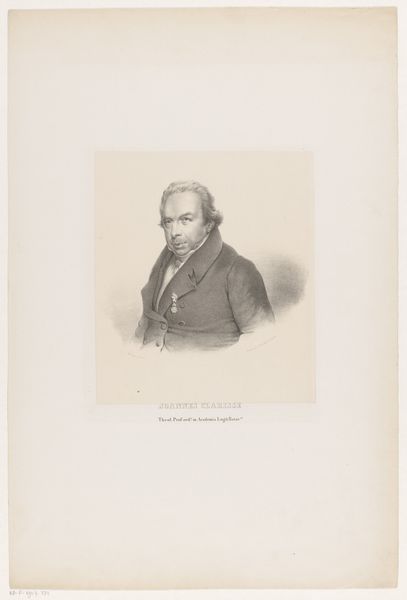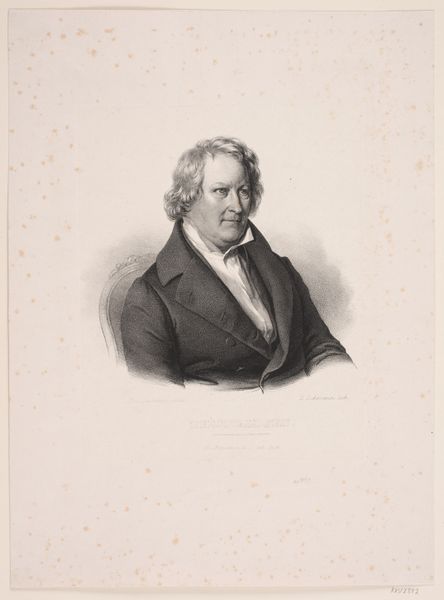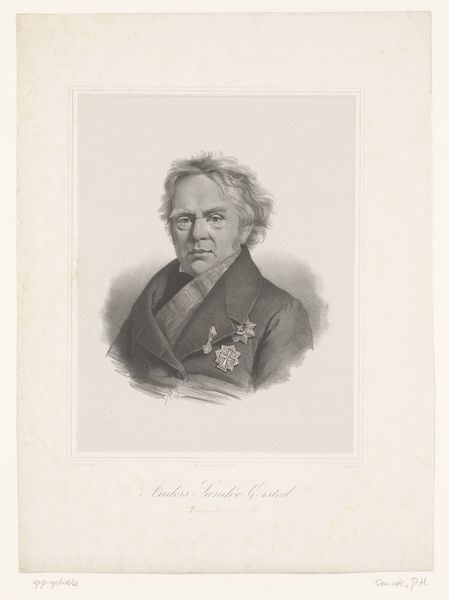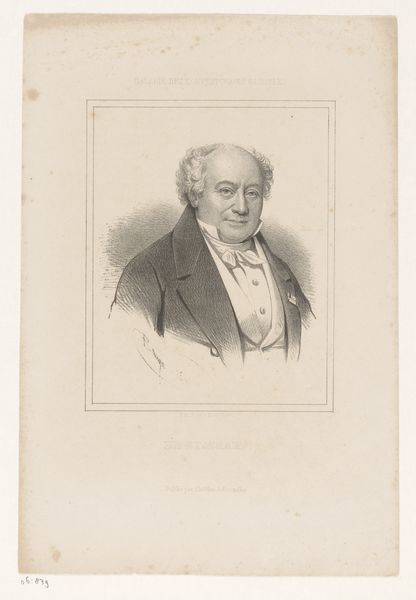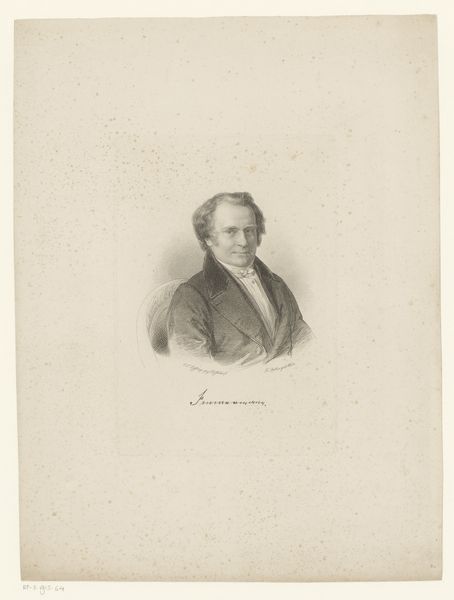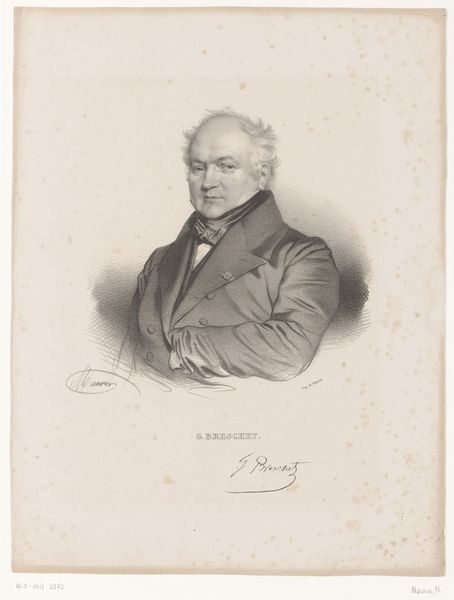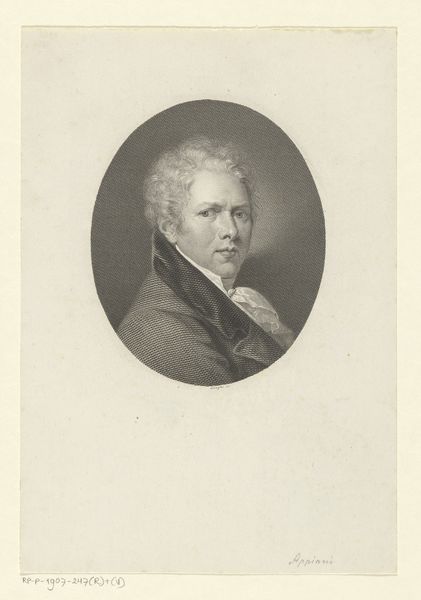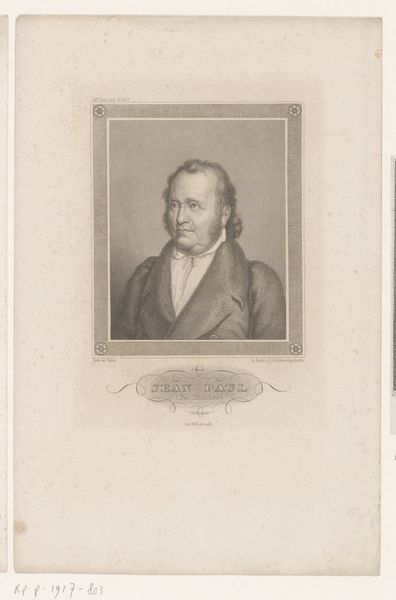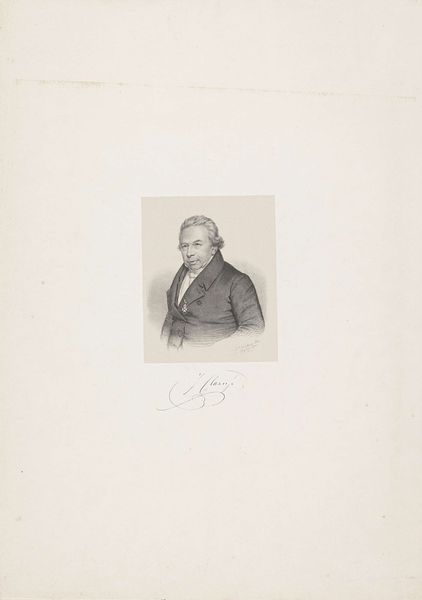
lithograph, print
#
portrait
#
16_19th-century
#
lithograph
# print
#
realism
Dimensions: 357 mm (height) x 485 mm (width) (bladmaal)
Editor: Here we have a lithograph from 1839 titled "Anders Sandøe Ørsted." It's quite a striking portrait; very detailed, and he seems… rather stern, perhaps? What can you tell us about the social context of portraits like this one? Curator: Well, it's crucial to understand how portraiture, especially in the 19th century, functioned within a very specific power dynamic. Lithographs like this, made accessible through print, became a vital tool for shaping public image. Notice the detail given to Ørsted’s features and attire – how does this contribute to his presentation? Editor: He's wearing what looks like a very formal jacket, and I can see the detailing of what seems like a medal on his lapel, emphasizing his status and success. Was this a way of solidifying someone's legacy and reputation? Curator: Precisely. Public figures like Ørsted, who was a prominent jurist and statesman, carefully controlled their image. The lithograph was not just a representation but a political statement. It affirmed and perpetuated existing social hierarchies. Who do you think had access to portraits such as this one? How did the prints circulate? Editor: I’m guessing they circulated among the upper class and intellectual circles; maybe even used as political propaganda? I’m starting to see this lithograph in a different light; beyond just a picture of a man, it’s part of the theater of power! Curator: Exactly. It shows us how art participates in the construction of fame and authority and, crucially, whose stories get told and preserved within the visual record. Consider, also, whose stories were left out. Editor: That makes perfect sense. So, seeing it now, it's less about just aesthetics and more about the power of representation. Fascinating. Curator: Indeed. Hopefully, now you recognize that beyond mere aesthetic qualities, it carries significant socio-political weight.
Comments
No comments
Be the first to comment and join the conversation on the ultimate creative platform.

